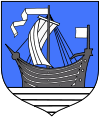 Alternate names: Lipsk [Pol, Yid, Rus], Липск [Rus], ליפסק [Yid]. 53°44' N, 23°24' E, 18 miles W of Hrodna (Grodno), 32 miles SE of Suwałki (Suvalk), 18 miles ESE of Augustów. This is not Lipsko, Radom gubernia.
Alternate names: Lipsk [Pol, Yid, Rus], Липск [Rus], ליפסק [Yid]. 53°44' N, 23°24' E, 18 miles W of Hrodna (Grodno), 32 miles SE of Suwałki (Suvalk), 18 miles ESE of Augustów. This is not Lipsko, Radom gubernia.
Słownik Geograficzny Królestwa Polskiego (1880-1902), V, p. 294: "Lipsk" #1. Lipsk is a town in Podlaskie Voivodeship with 2,520 inhabitants in 2004. The Biebrza valley communes' capital towns are Nowy Dwór, Lipsk, and Dąbrowa Białostocka. Lipsk is known as local cultural center for its tradition of Easter eggs painting (pisanki) by numerous folk artists.
Jewish history and history. [Dec 2013]
Jewish settlement in Leipzig began in the first half of 17th century. In 1643, King Ladislaus IV gave Leipzig Jews privileges on 15 March 1679 that Jan III Sobieski confirmed guaranteeing the right of the Jews to build a synagogue, own property, and manufacture and sell alcoholic beverages. In 1680, ten Jews lived in the village. The history of Jews in Leipzig has been volatile. Jews never were the majority of the population. Jewish population: 1799 - 171 (19.5%); 1820 - 264; 1860 - 464 (26.8%); 1900 - 510 (32.6%). WWI and the subsequent economic crisis encouraged immigration, reducing their number in Leipzig. By 1921, only 87 Jews remained. In 1941 the Nazis deported all Jews to the ghetto in Grodno and later to death camps. Today, one tangible sign of the presence of Jews in Leipzig is a small cemetery located on the back road northeast of the town, visible from afar as a clump of trees. The 0.5 hectare cemetery probably dates from the 18th century. The few remaining gravestones are mostly rough granite. On the edge of the cemetery is a monument inscribed: Leipzig Jews - Residents. Photos [May 2009]
CEMETERY:
- burial list [Jan 2015]
US Commission No AS 218
Located in Suwalskie at 53º24N 23º24E, 33 km from Augustow and 82 km from Bialystok. Cemetery is at N edge of the town. Present town population is 1,000-5,000 with no Jews.
- Town: Andrzej Licwienko-Burmistrz, Urzad Miasta I Gminy w Lipsku, 16-315 Lipsk, ul. Koscielna 3, Tel. 43021.
- Regional: Stanislaw Tumidajewicz, Wojewodzki Konserwator Zabytkow, 16-400 Suwalki, ul. Kosciuszki 7, Tel 663741.
1679 Jewish population was 10; 1766-392; 1921-87 [sic "and approximately 100"]. The Orthodox Jewish cemetery was established in the late 18th century. Landmark: (landmark number 534/741/d/89) from 11/27/1989. (nr. rej.zabykow woj suwalskiego-741,1.dz.WKZ) The isolated suburban flat land has a sign in Polish and Hebrew mentioning Jews and the Holocaust. Reached by turning directly off a public road, access is open to all with no wall, fence or gate. Approximate size of cemetery before WWII and now is.38 ha. 20-100 gravestones, some in original location with less than 25% toppled or broken, date from 19th-20th centuries. The granite and sandstone rough stones or boulders or finely smoothed and inscribed stones have Hebrew inscriptions. The cemetery contains special memorial monuments to Holocaust victims and has no known mass graves. The municipality owns property used as a Jewish cemetery only. Properties adjacent are agricultural and residential. Rarely, private visitors or local residents stop. The cemetery was vandalized in WW II. There is no maintenance or structures. Vegetation is a serious threat (overgrown with trees, bushes and thicket); weather erosion is a moderate threat.
Dr. Janusz Mackiewicz, 16-400 Suwalki, ul. 1 Maja 27a/47, Tel. 663756, 663741 completed survey on 9/22/1994.
